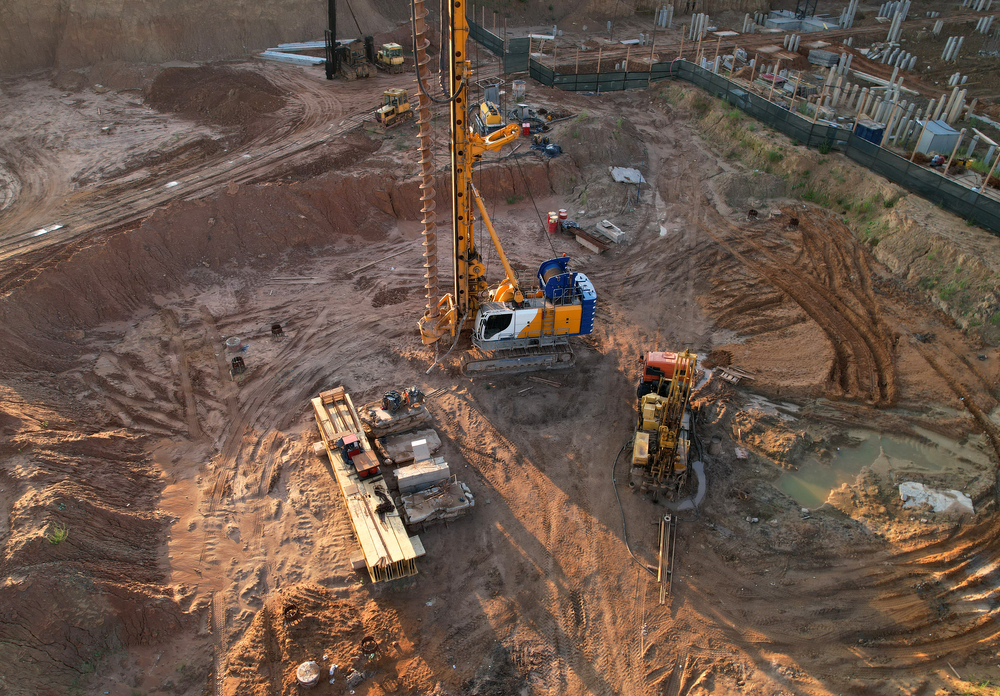More About Geotheta
More About Geotheta
Blog Article
Getting My Geotheta To Work
Table of ContentsAn Unbiased View of GeothetaThe 8-Minute Rule for GeothetaThe 45-Second Trick For GeothetaGet This Report on GeothetaGeotheta Things To Know Before You Buy

They perform site investigations, accumulate examples, carry out laboratory tests, and examine information to review the viability of the ground for construction projects - Geo Tech Engineering. Based on their searchings for, geotechnical designers give recommendations for foundation style, incline security, keeping frameworks, and reduction of geotechnical hazards. They team up with other experts, such as designers, structural engineers, and building and construction groups, to ensure that geotechnical considerations are incorporated right into the general project style and application
By evaluating the habits and buildings of dirt and rock, they can recognize possible geotechnical dangers such as landslides, dirt negotiation, or slope instability. Their know-how helps stop failures or accidents that could jeopardize lives and residential property. Right here are some detailed obligations and responsibilities of a geotechnical engineer: Website Examination: Geotechnical engineers conduct website examinations to gather data on subsurface problems.
They analyze the information to recognize the homes and habits of the soil and rock, including their toughness, leaks in the structure, compaction features, and groundwater conditions. Geotechnical Analysis and Style: Geotechnical designers assess the data gathered throughout website examinations to analyze the stability and viability of the website for building and construction jobs. They execute geotechnical computations and modeling to examine aspects such as birthing ability, settlement, incline security, lateral planet pressures, and groundwater circulation.
The Best Guide To Geotheta
Foundation Layout: Geotechnical designers play an important function in developing foundations that can safely support the desired structure. They evaluate the soil conditions and lots demands to identify the proper foundation kind, such as shallow structures (e.g., grounds), deep structures (e.g (https://www.intensedebate.com/people/geotheta)., piles), or specialized techniques like dirt renovation. They consider aspects such as negotiation limitations, birthing capability, and soil-structure communication to establish ideal structure layouts
They evaluate construction strategies, monitor site activities, and carry out field assessments to confirm that the style recommendations are followed. If unpredicted geotechnical problems emerge, they examine the circumstance and provide referrals for remediation or modifications to the design. Threat Analysis and Mitigation: Geotechnical designers assess geotechnical risks and threats connected with the project website, such as landslides, liquefaction, or dirt erosion.

Collaboration and Communication: Geotechnical designers work very closely with other specialists involved in a job, such as architects, structural engineers, and construction groups. Effective communication and partnership are necessary to incorporate geotechnical considerations right into the general job layout and construction procedure. Geotechnical designers supply technical expertise, solution inquiries, and guarantee that geotechnical demands are met.
See This Report on Geotheta
Below are some types of geotechnical engineers: Structure Designer: Structure designers concentrate on creating and analyzing foundations for frameworks. They evaluate the dirt conditions, tons needs, and website attributes to identify the most suitable structure kind and layout, such as shallow foundations, deep foundations, or specialized techniques like heap foundations.
They examine the variables affecting slope stability, such as dirt residential or commercial properties, groundwater problems, and incline geometry, and establish strategies to stop incline failures and mitigate threats. Earthquake Engineer: Earthquake engineers focus on assessing and designing frameworks to endure seismic forces. They evaluate the seismic risk of a website, assess soil liquefaction potential, and create seismic design criteria to guarantee the safety and resilience of frameworks throughout quakes.
They execute area screening, collect examples, and evaluate the collected information to characterize the dirt residential properties, geologic formations, and groundwater problems at a website. Geotechnical Instrumentation Designer: Geotechnical instrumentation designers concentrate on tracking and determining the habits of soil, rock, and structures. They mount and keep instrumentation systems that keep an eye on elements such as dirt settlement, groundwater degrees, slope movements, and architectural variations to examine performance and offer very early warnings of possible problems.
Indicators on Geotheta You Should Know
They perform tests such as triaxial examinations, combination examinations, direct shear examinations, and permeability examinations to gather information for geotechnical evaluation and layout. Geosynthetics Designer: Geosynthetics designers specialize in the style and application of geosynthetic products, such as geotextiles, geogrids, and geomembranes. They utilize these materials to enhance soil stability, enhance slopes, give water drainage services, and control disintegration.
They have a tendency to be investigatory individuals, which means they're intellectual, introspective, and inquisitive. They are interested, systematic, sensible, analytical, and rational. Some of them are additionally social, implying they're kind, generous, participating, individual, caring, useful, compassionate, tactful, and pleasant - Consulting Engineers.
In the workplace atmosphere, geotechnical designers utilize specialized software program tools to execute calculations, develop designs, and assess data. They prepare reports, evaluation task requirements, communicate with customers and staff member, and coordinate project activities. The workplace setup supplies a helpful setting for study, evaluation, and partnership with other specialists associated with the project.
Getting My Geotheta To Work
They frequently see job websites to perform site investigations, analyze geotechnical problems, and gather data for analysis. These gos to entail traveling to different places, often in remote or tough surfaces. Geotechnical designers may execute dirt tasting, conduct tests, and screen construction activities to make sure that the find out this here geotechnical elements of the job are being implemented appropriately.
Geotechnical designers additionally function in specialized geotechnical labs. In these facilities, they carry out experiments, carry out examinations on dirt and rock samples, and analyze the design properties of the materials. Geotechnical research laboratory designers work extensively in these atmospheres, handling testing devices, operating tools, and tape-recording information. They team up with other research laboratory team to guarantee precise and dependable testing results.
Report this page